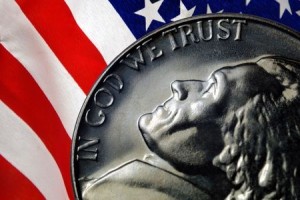
The following is a guest post. If you’d like to guest post on the Dividend Ninja, be sure to check out our Guest Posting Guidelines.
The monetary policy is controlled by government managed Central Banks. In the U.S., it is called the Federal Reserve or Feds. In Europe, it is called the ECB (European Central Bank). Australians call theirs the Reserve Bank of Australia (RBA) and in most countries it is referred to as the Central Bank.
Monetary policy is used to influence the level of interest rates. This in turn influences the investment behavior of firms and individuals, the consumption level of households, and the supply of credit available in the economy. Monetary Policy also affects the prices of stocks and assets, as well as the exchange rate and level of inflation.
The Central Banks use the banking system to influence interest rates. They do so by adjusting the interest rate on overnight loans in the money market. This is also called the cash rate. If the Central Bank wants to lower the interest rate for example, it will supply more exchange settlement funds than the commercial banks want to hold, by decreasing the overnight rate or the cash rate.
As a result, the banks will offload funds by charging lower interest rates on its loans to encourage borrowing by the private sector. Conversely, if the Central Bank wants the interest rate to increase, it will withhold exchange settlement funds. Thus, banks will have to lend at a higher rate due to the scarcity of money.
For firms and individuals, lower cost of money (interest rates) is always welcome news. This would mean lower lending costs and this could stimulate spending and establishment of new businesses and infrastructures. Spending and new ventures will lead to more prosperous individuals and firms. This will also serve as a catalyst for economic growth. This will increase consumer spending as more jobs are created and workers earn better incomes.

Lower rates also encourage more investment in the stock markets, which will be good for expansion of firms and businesses. This will further increase employment and more household consumption and savings.
At the household level, this translates to high purchasing power and will translate to higher level of spending or savings. Higher demand will lead to expansion of firms, and higher household savings will make the cost of money even cheaper. And so the cycle of prosperity will continue. When viewed this way, flooding the economy with money seems to be a good thing.
However, monetary policy functions to regulate its effects on the macro-economy. When interest rates become so low because of the excess in money supply, there will be less incentive for firms and individuals to invest. This result to increase in consumption and spending, and will eventually lead to increase in aggregate demand. High demand can be inflationary, and may increase the prices of commodities. If this happens, and commodity pricing becomes uncontrollable, the Central Banks step in to combat inflation by tightening monetary policy. Tightening monetary policies only mean one thing. Increase in overnight rates and in the interest rates. This will dampen demand and restore the level of pricing.
